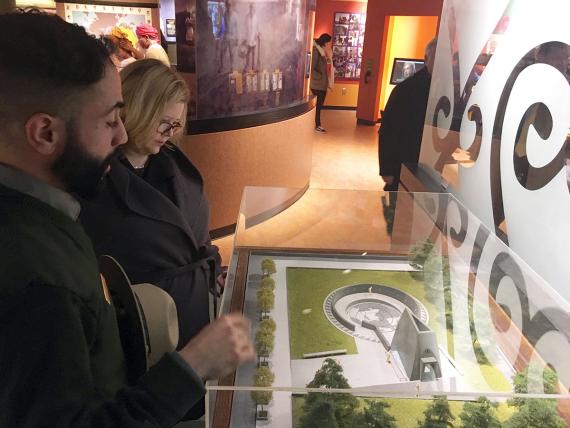African Burial Ground symbolism links past to present
By Alison Kohler
New York — The heart-shaped symbol that is prominent throughout the African Burial Ground site communicates a salient message for African-American History Month — “look to the past to inform the future.”
The National Park Service now maintains and operates the African Burial Ground site that workers discovered during pre-construction work on GSA’s Ted Weiss Federal Building at 290 Broadway.
GSA Administrator Emily W. Murphy visited the site to pay her respects while she was in New York City visiting the Northeast and Caribbean Region Feb. 22 and 23.

The African Burial Ground National Monument is closed for the cold season, but Sean Ghazala, lead park ranger at NPS’ African Burial Ground, explained the symbolism behind the design.
“The chamber portion of the monument was deliberately designed to be dark and constricting,” Ghazala said. “We never want to forget the middle passage and the horrors that went with it.”
The African Burial Ground changes how we think about slavery and the city’s history, Ghazala said. “This isn’t something that was just limited to the South. These folks did a different sort of work. They would have built this early city. They were responsible for the building of Broadway,” Ghazala said.
“One in five New Yorkers would have been enslaved Africans at the height of slavery, so 20 percent of the city were Africans held in captivity. And I think that really changes how we understand our nation,” Ghazala said.
The site continues to preserve the history and honor the spirit of the African people buried there. Symbols along the wall of the National Monument are meant to pay tribute to the different identities.
“Just like we don’t call ourselves ‘North Americans,’ they wouldn’t call themselves ‘Africans.’ They had their own religions, nations, cultures and tribes. We want to celebrate that they’re African, but we also want to celebrate what made them unique,” Ghazala said.

 U.S. General Services Administration
U.S. General Services Administration